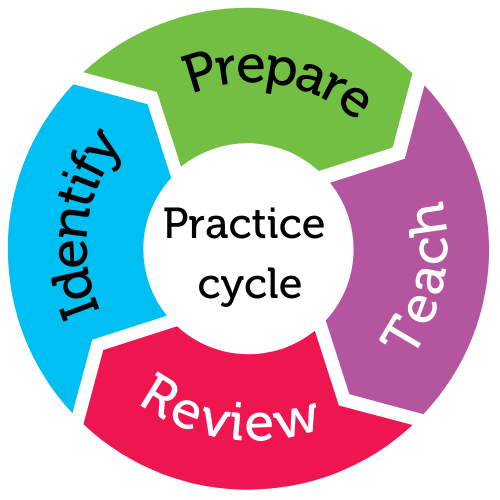
For student year
Helps students to
- build greater independence
- maintain on-task behaviour
Helps teachers to
- teach independence
- teach organisation
Summary
Some students, including those on the autism spectrum, may need additional support with tasks requiring executive functioning and working memory, including multi-step tasks where a student must remember and undertake several steps before the task is complete.
Self-management tools allow the student to be independent in the classroom and take an active role in monitoring their progress in assigned tasks. Self-management skills can be used to improve academic achievement, productivity, organisational skills, and reduce off-task behaviours.
Visual tools such as task sheets or checklists are helpful in developing organisational skills and independence in students.
Australian Professional Standards for Teachers related to this practice
1.5 - differentiate teaching to meet the specific learning needs of students across the full range of abilities
3.3 - use teaching strategies
For further information, see Australian Professional Standards for Teachers AITSL page
Preparing to teach
How does it help?
Providing visual self-management tools for complex activities or assignments can help students to build their organisation skills, independence, and engagement.
These tools help students to:
- break down complex activities into manageable steps
- create checklists using the steps.
See the practice Structure tasks using work systems for an advanced form of this strategy.
Task sheets
Task sheets are clear and easy to understand, and provide students with information about complex classroom tasks, e.g.:
- what they need to do
- the standard of work required
- the steps they need to take to complete a task
- the order in which they should complete the steps.
Checklists
Checklists help students to:
- remember the materials they need
- keep track of individual steps in a task
- check off steps as they are completed
- monitor their progress
- reward themselves for completing a task
- feel capable and successful.
It works better if:
- students create their own checklists – they are more powerful when created by the student
- you begin with smaller task-based checklists and gradually move to more complicated checklists
- task sheets clearly outline each component of the task
- student use of checklists initially is monitored to ensure students understand which items, steps, or materials need to be included on the checklist.
It doesn’t work if:
- task sheets are overloaded with complex information
- task sheets or checklists are not explained
- students are not given adequate time to plan and work through their checklist or task sheet
- use of checklists is not monitored.
In the classroom
How do I do it?
- Identify which students could benefit from visual self-management tools.
- Choose the most appropriate tools for each student’s needs.
- Prepare self-management tools required.
- Monitor students’ use of the self-management tools and scaffold as required.
Task sheets
- Break down complicated activities into manageable steps.
- provide a clear and easy to understand task sheet to students for complex classroom tasks or assessment tasks, which outlines each component of the task and the requirements for the task.
- Read through the task sheet with students and explain how to use it.
- Help students to identify which items need to be on their checklist (if this isn’t included on your pre-prepared checklist).
Checklists
- Create checklists to ensure activities are completed accurately
- work with students to to break down complicated activities into manageable steps , or create a checklist for students that lists all steps and materials needed for each step.
- For students who require it, assist them with choosing which steps/materials need to be on the checklist.
- Monitor and support the student’s use of the checklist
Practice toolkit
Practice implementation planner template
We know it's not always easy to keep track of what's working and what isn't. So, we've created this template for you to record and reflect on what you're doing to create more inclusive classrooms. The implementation planner contains:
- guidance around goal setting
- a reflection section (what worked, didn’t work, what to change, and next steps)
- prompting questions.
Implementation planner with examples
Set your professional learning goal for:
Use visual self-management tools
Benefits of goal setting
Setting, working towards, and reflecting on goals helps you grow professionally and improve your practice. You can access AITSL learning resources for teachers to learn more about:How to set goals
The Australian Institute for Teaching and School Leadership recommends using the SMART matrix to frame your goal setting.SMART goals refers to goals that are:
- Specific
- Measurable
- Achievable
- Relevant
- Time-phased
Resources
Use visual self-management tools - Practice Brief
Related Practices

Use visual schedules
TEACHING PRACTICE
For student years
Helps students to
- transition smoothly
- understand expectations
- learn new concepts
This practice is from the core research project
Learning Cycle

